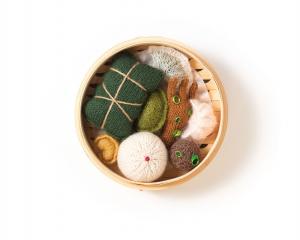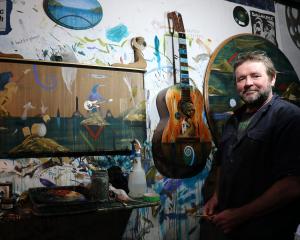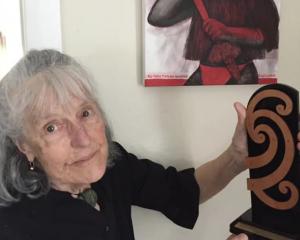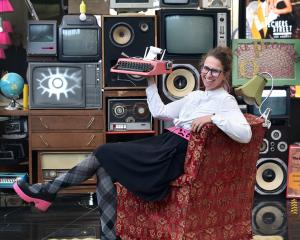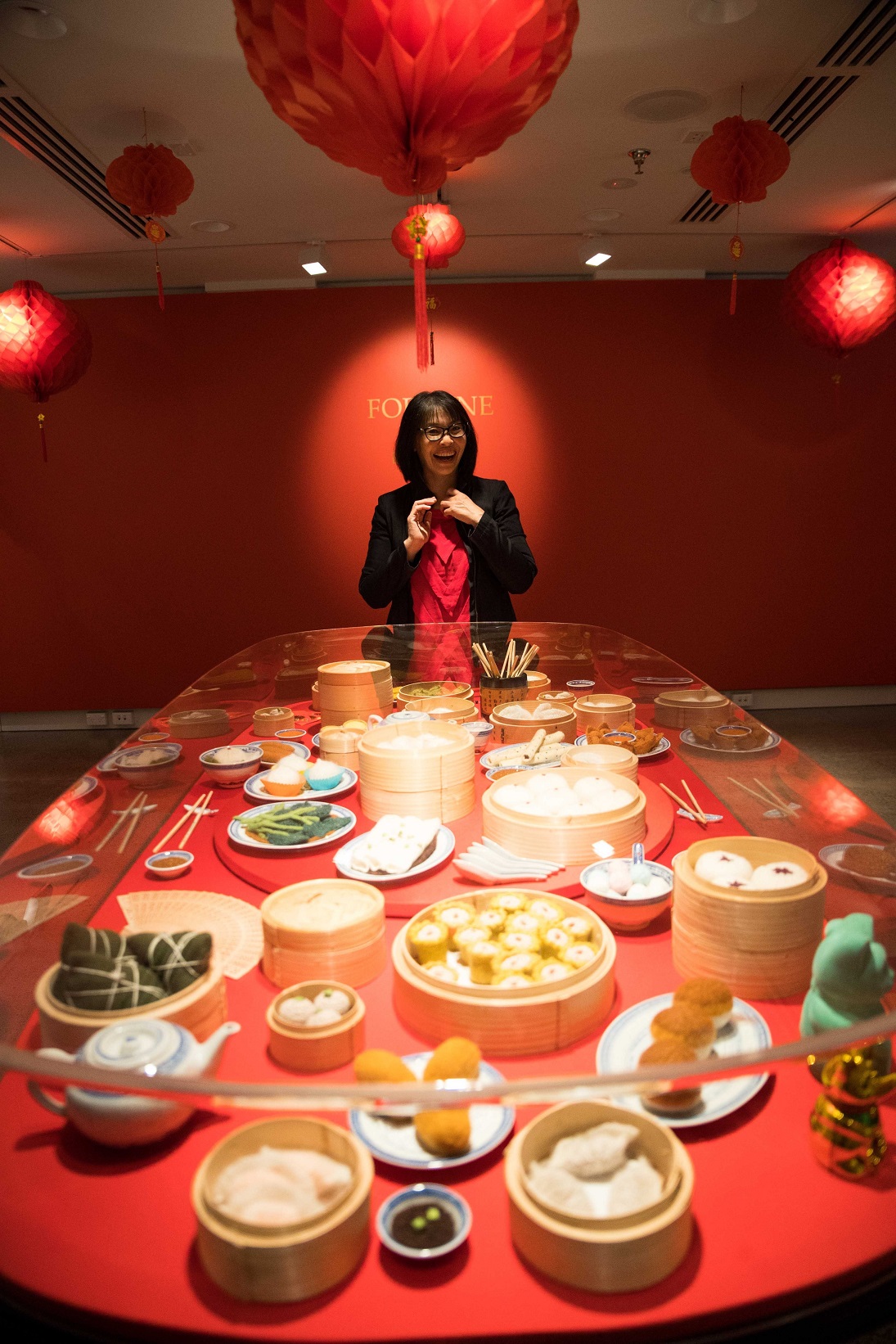
The therapeutic clicking of knitting needles kept Bev Moon occupied during the Covid-lockdowns.
But it was not scarves or jumpers that emerged from her busy fingers but dumpling wrappers and pork buns.
While it kept her busy, it also became a way for her to tell her family story without guilt.
Growing up with immigrant parents — her father ran a fish and chip shop in Wellington for about 30 years — Moon just wanted to fit in. She was not interested in her father’s stories about the family history.
"As teenagers we just wanted to be like everyone else. We didn’t want to be Chinese."
Making art was also not seen as a viable career by her parents, who wanted her to pursue a more stable and lucrative career .
"While I have worked around art all my life, I always wanted to be an artist myself. I drew obsessively when I was a kid. Whenever I tried art I felt guilty.
"So I stopped art for 30 years, but I never felt guilty doing this. It seemed a natural thing to do, to knit art works."
It was not until she attended the conference "Dragon Tails", about the Chinese diaspora in Australia and New Zealand, in 2019 in Wellington and heard Dunedin general practitioner and historian Dr James Ng talk about early Chinese settlers and his archives he collected of Chinese papers over many years that an interest in her family heritage was ignited.
"I realised James Ng was my dad’s first cousin. I’m actually related to these people, the pioneers of the gold rush.
"I thought ‘gosh we do have an interesting story’."
Unfortunately, her father died in 2012, so she could not ask him more.
When the lockdowns hit she began thinking about her family story more. Knitting was seen as acceptable by her family, so Moon was taught by her late mother, Yip Sue Yen, and grandmother, Lee Choy Keewho, from the Toi Shan province of Guangdon, China.
"I’ve always knitted. It was the one thing I was allowed to do, as drawing or painting wasn’t seen as being useful, but knitting was seen as useful, as you produced something to wear."
So during lockdown she had the idea of knitting some of the food her mother and grandmother had taught her to make, "marrying" together the two skills. Having helped her mother make the foods, she had an idea of how they were constructed.
"I had some wool and thought I’d see if I could make a dumpling or a pork bun and thought ‘OK that worked’. So I made some more. Then I thought I’d try some different dishes like a spring roll and other things."
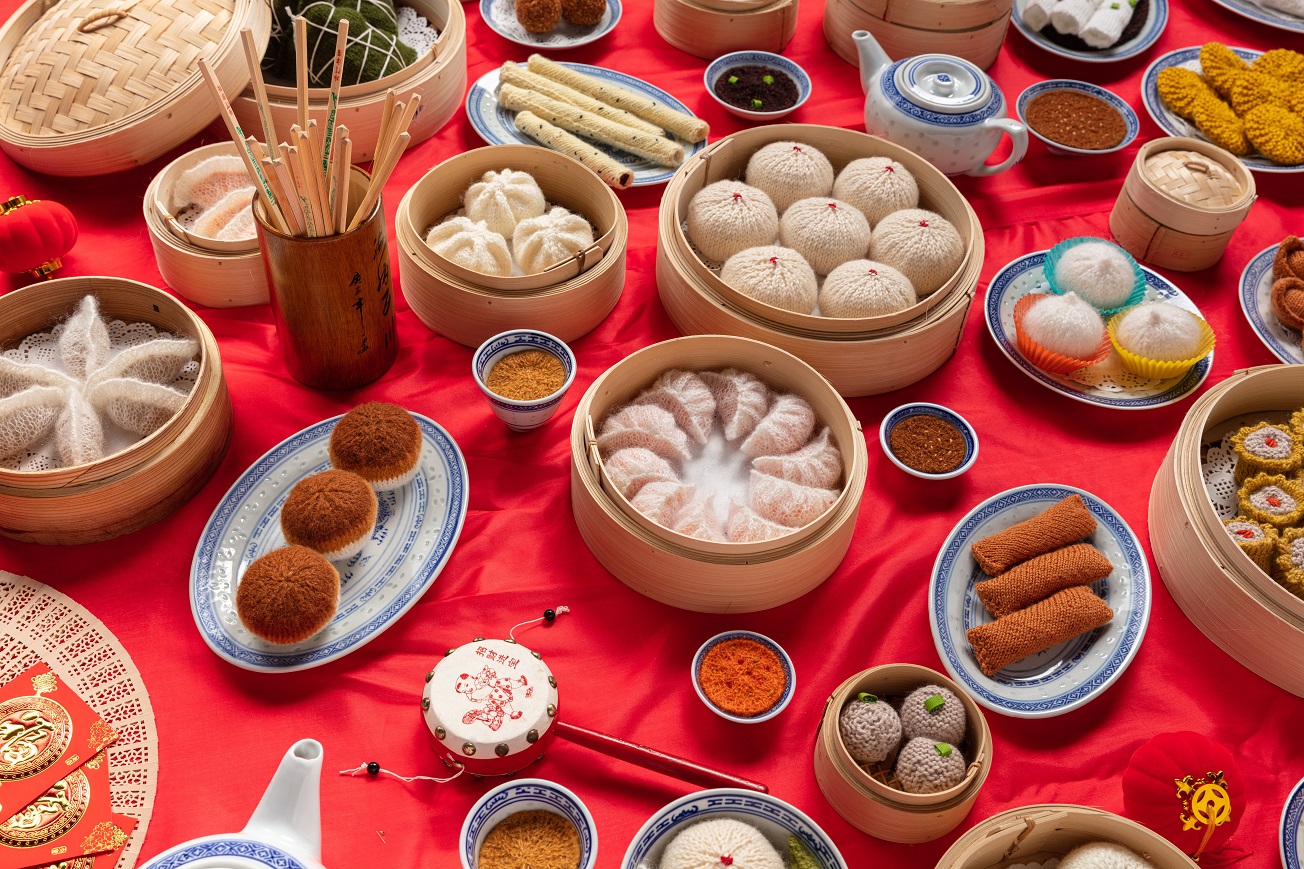
"To find the right colours and textures was tricky. There were definitely a bunch of rejects, as a lot of colours were not quite right and I’ve given many away.
"It was an experiment and I enjoyed the challenge."
As her mother would have turned 90 in 2022 she set herself a challenge to make as many as she could by that date.
"More is more."
"The only thing I’m missing is chicken feet, which I always wanted to make."
Then she photographed what by then had become a yum cha banquet and posted it on social media in tribute of her mother.
"The response was amazing.
"I didn’t expect people to be as interested as they were.
"I think people reacted the way they did because everyone eats and it’s about food and family, and reuniting. "
Among those interested were past workmates and contacts who suggested she should exhibit her work.
It was first exhibited in Upper Hutt and earlier this year at Waikato Museum Te Whare Taonga O Waikato.
"It’s an amazing honour to show in a gallery.
"It’s all been word of mouth. It’s really amazing."
Another contact suggested she apply to the Chinese Poll Tax Heritage Trust, which funds projects bringing awareness to the poll-tax descendants, for funding to help the exhibition tour the country to places such as the Hocken Gallery in Dunedin and the Eastern Southland Museum and Art Gallery — places Moon’s family all had connections to.
Under the Chinese poll tax, it was mostly males that came out to New Zealand, as it cost so much. They were "dirt poor" and often only 12 or 14 years old.
Moon’s great-grandfather was only 12 when he arrived and with gold drying up he worked in laundries, finally settling in Gore in the 1880s.
Then when he was old enough he returned to China, where he married and conceived a child — Moon’s grandfather. But he had to leave them behind to return to New Zealand.

"When they were old enough they came out on the boat."
Then like their fathers before them, they returned to China to get married and have children before returning again to New Zealand. Over successive generations the men moved north to the market gardens of Ashburton and Timaru, the fruit shops of the Wairaprapa and the laundries of Dunedin and Wellington.
Moon’s great-grandmothers did not make it to New Zealand and were only reunited with their husbands when they returned to live out their last days.
However, her mother and grandmother were luckier.
When the Sino-Japanese War began in 1939 the New Zealand government allowed 500 wives and children of Chinese men living in the country to come out temporarily if they paid a bond.
Moon’s mother and grandmother came out in 1940.
"But the war kept going, so they allowed them to stay.
"It was significant, as there weren’t many Chinese women in New Zealand until then."
That history led Moon to the title of her work, "Fortune", as it was fortune that saw her mother and grandmother be two of the 500 that got to come out and, she believes, Dr Ng and his mother as well.
"It also cost a fortune in wool to make the art work. I made more than is in the exhibition, but that’s all that would fit on the table."
The project is also a way of acknowledging the women of her family and the struggles they faced parenting alone in China and then adapting when they came out to New Zealand.
"Neither were able to go to school, so didn’t read or write in English or Chinese. They couldn’t speak English.
"They’d knit all our jerseys and things. I don’t know how they knew the size and stuff."
So devising her own patterns was just like what her grandmother did in the "old days". She also finds knitting quite therapeutic and mediative.
"You process your thoughts. I love doing it."
She has also completed another banquet this year, "Offering", about her immediate family, which featured place settings for her mother, father and sister who have passed away, as well as her five siblings who are still alive.
And the chicken feet she did not make last time.

A turning point for Moon, who is Auckland Museum’s manager of human history collections, came when she spoke to a self-supporting artist whose opinion was it would be a waste to not follow his creative path.
"I thought ‘that’s true’. Then it started me thinking and I started doing stuff."
So since 2020 she has unleashed her creativity painting, including one of her Dad’s fish and chip shop, sculpting and printmaking without any guilt.
Moon wonders what her parents would think of her works.
"They were quite discouraging of me going down that creative path. They were refugees; for them it was about survival and a secure future.
"But now I think they might be quite pleased and proud as I’ve tried to tell the family story.
"I feel it’s his influence. It’s so sad I can’t ask him anything."
"Fortune" also includes archival material from Hocken Collections, the New Zealand Chinese Heritage Charitable Trust Collection, held in the Presbyterian Research Centre Archives at Knox College, and private collections.
Hocken Collections curator of art Hope Wilson says some interesting pieces have been found, including a stunning 5.8m-long embroidered banner, given to Hanover Street Baptist Church about 1900 by a Chinese Sunday school class, which has not been exhibited before.
"Some of the key themes we are interested to investigate with this exhibition are connections over time between families and communities, and knowledge and skills passed down by generations."
She hopes the material exhibited may bring further information and material to light about early Chinese history in the region.
"It’s a great opportunity to start a conversation."
New Zealand Chinese Heritage Research Charitable Trust member and archivist Jennifer Jeffery, who helped on the project, says it is an incredible opportunity to highlight and display some of Dr Ng’s collection.
TO SEE:
"Fortune", August 12 to October 21, Tuesday to Saturday, 10am to 3pm, at Hocken Collections.
Guest speaker, former chairman of the Dunedin Shanghai Association and current chairman of the Dunedin Chinese Gardens Trust, Malcolm Wong, will open the exhibition, at which members of the Otago Southland Chinese Association will perform a lion dance.
A public paper lantern and fortune cat workshop will also be held at the Hocken on Saturday, August 12, from 10am to noon.




